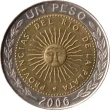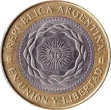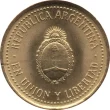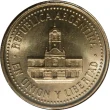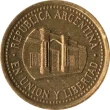Exchange your Argentine Pesos
If you have leftover Argentine Pesos, we offer a quick and easy way to exchange them. Whether you’ve returned from a trip to Argentina or have withdrawn pesos, our service ensures you can convert them into your local currency hassle-free. Don’t let your pesos sit unused in a drawer – turn them into spendable money right away with our fast exchange process.
$ - ARS
The Argentine Peso has been the official currency of Argentina since 1992 and remains a symbol of the country’s economic resilience.
Argentine Pesos Information
The Argentine Peso (ARS) is the official currency of Argentina and has been through several transformations throughout the country’s history. The modern peso, known as the “peso convertible,” was introduced in 1992, replacing the austral at a rate of 10,000 australes to 1 peso. Argentina has a long and complex financial history, and the peso has played a central role in the country’s economic development.
The peso is divided into 100 centavos, and Argentina’s monetary system includes both coins and banknotes. Coins are issued in denominations of 1, 5, 10, 25, and 50 centavos, as well as 1, 2, and 10 pesos. Banknotes, on the other hand, are available in denominations of 20, 50, 100, 200, 500, and 1,000 pesos. Argentina’s banknotes feature historical figures, cultural icons, and native wildlife, reflecting the nation’s heritage and diversity. For instance, the 1,000-peso note prominently features the hornero bird, Argentina’s national bird.
The peso has seen significant fluctuations in value over the years due to various factors, including inflation, political instability, and economic crises. The Argentine government has implemented several monetary policies to stabilise the currency, but the peso remains sensitive to both internal and external pressures. During periods of high inflation, such as the hyperinflation crisis of the 1980s and 2001, the value of the peso fell drastically, and the country had to implement major reforms to restore economic stability.
In response to these challenges, Argentina pegged the peso to the U.S. dollar in the early 1990s under a policy known as the Convertibility Plan. This policy fixed the peso at a one-to-one exchange rate with the U.S. dollar. However, after the economic crisis of 2001, Argentina abandoned the fixed exchange rate system, allowing the peso to float freely. Since then, the peso’s value has fluctuated significantly against the dollar and other international currencies.
Today, the Argentine Peso continues to face economic pressures, with high inflation rates affecting its purchasing power. Despite this, the peso remains an integral part of the Argentine economy. Argentina’s central bank, Banco Central de la República Argentina (BCRA), oversees the issuance and regulation of the peso. The bank works to stabilize the currency through various monetary policies, although inflation remains a persistent issue.
Argentina’s economy is largely driven by agriculture, particularly the production and export of soybeans, wheat, and corn. The country also has significant natural resources, including oil and gas reserves, which play a critical role in its economic structure. External factors, such as fluctuations in global commodity prices and political shifts, also impact the value of the Argentine Peso on international markets.
In summary, the Argentine Peso has a rich and complex history, shaped by the country’s economic challenges and reforms. While the peso has faced many difficulties, including periods of hyperinflation and currency devaluation, it remains a key symbol of Argentina’s national identity and economic resilience.

